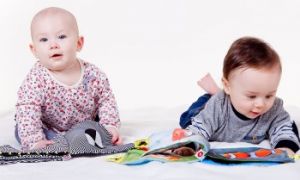Quality Area 2 of the National Quality Standard focuses on children's health and safety. This area is to safeguard and promote children’s health and safety, minimise risks, and protect children from harm, injury, and infection. The following article provides a list of critical reflection questions to guide thinking and practice for QA2.
Standard 2.1
-
How do we ensure that all children have access to quality health care and safe environments?
-
What measures are in place to prevent accidents and injuries, and how can they be improved?
-
How do we support children's emotional and mental well-being, in addition to their physical health?
-
What policies do we have for managing and responding to health-related emergencies? Are they effective?
-
How do we teach children about health and safety in a way that is engaging and understandable for them?
-
How do we ensure that our health and safety practices are inclusive of all children, including those with additional needs?
-
What is our approach to collaborating with families and the community on health and safety issues?
Standard 2.1.1 Wellbeing and Comfort
-
How do we ensure that each child's wellbeing and comfort are consistently met throughout the day?
-
What strategies do we use to create a comfortable and nurturing environment for rest and relaxation?
-
How do we accommodate individual children's needs for sleep, rest, and relaxation?
-
How do we involve children in decisions about their rest and comfort routines?
-
What measures do we take to ensure that children feel safe and secure during rest times?
-
How do we support children who have difficulty settling down for rest or sleep?
-
How do we communicate with families about their child's rest and comfort needs and routines?
-
What resources and materials do we provide to support children's comfort and wellbeing?
-
How do we monitor and evaluate the effectiveness of our practices related to wellbeing and comfort?
-
How do we ensure that all educators are aware of and follow guidelines for promoting wellbeing and comfort?
Standard 2.1.2 Health Practices and Procedures
-
How do we promote and implement effective illness and injury management practices?
-
What hygiene practices do we have in place, and how do we ensure they are followed consistently by all educators and children?
-
How do we manage and respond to health-related emergencies? Are our procedures up-to-date and effective?
-
How do we ensure that all staff are trained in first aid, CPR, and the use of emergency equipment?
-
What strategies do we use to minimize the spread of infectious diseases within our service?
-
How do we communicate with families about health practices and any incidents of illness or injury?
-
How do we support children in developing good hygiene habits and understanding the importance of health practices?
-
What measures do we take to ensure that our environment is clean and safe for children?
-
How do we involve children in maintaining cleanliness and hygiene within the service?
-
How do we review and update our health practices and procedures to align with current guidelines and best practices?
Standard 2.1.3 Healthy Lifestyle
-
How do we promote healthy eating habits among children in our care?
-
What strategies do we use to encourage physical activity and active play?
-
How do we ensure that the food and drinks provided meet each child's dietary needs and preferences?
-
What steps do we take to educate children and families about the importance of a healthy lifestyle?
-
How do we create an environment that supports and encourages healthy choices for both children and staff?
-
How do we involve children in planning and preparing healthy meals and snacks?
-
What measures do we take to ensure that children have ample opportunities for outdoor play and physical exercise?
-
How do we address and accommodate children with specific dietary requirements, allergies, or intolerances?
-
How do we evaluate the effectiveness of our healthy lifestyle initiatives and make necessary improvements?
-
How do we collaborate with families and the community to support children's healthy lifestyle habits?
Standard 2.2
-
How do we identify and manage potential risks to ensure a safe environment for children?
-
What procedures do we have in place for responding to emergencies and evacuations, and how often do we practice them?
-
How do we support children in developing their own understanding of safety and risk management?
-
How do we ensure that all staff are trained and aware of safety policies and procedures?
-
How do we involve families in discussions about safety and risk management at our service?
-
What strategies do we use to maintain a safe and secure physical environment, including playgrounds and outdoor areas?
-
How do we address and prevent bullying, harassment, and other forms of violence within our service?
-
How do we ensure the safety of children during excursions and other off-site activities?
-
What measures do we take to ensure the safe arrival and departure of children at our service?
-
How do we evaluate and improve our safety practices regularly to ensure they are up-to-date and effective?
Standard 2.2.1 Supervision
-
How do we ensure that children are effectively supervised at all times?
-
What strategies do we use to maintain appropriate supervision while allowing children the freedom to explore and engage in play?
-
How do we allocate staff to ensure optimal supervision across different areas of the service?
-
What procedures do we have in place for monitoring and adjusting supervision levels based on the activities and needs of the children?
-
How do we train and support staff to understand and implement effective supervision practices?
-
How do we communicate with families about our supervision practices and the importance of maintaining a safe environment?
-
What measures do we take to ensure that supervision is consistent across different times of the day, including transitions and outdoor play?
-
How do we address any challenges or incidents related to supervision to prevent future occurrences?
-
What role do physical environments and layout play in our supervision strategies?
-
How do we review and evaluate our supervision practices to ensure they remain effective and responsive to the needs of children?
Standard 2.2.2 Incident and Emergency Management
-
How do we prepare for potential emergencies and ensure all staff are aware of emergency procedures?
-
What regular training and drills do we conduct to ensure everyone is familiar with our emergency plans?
-
How do we assess the effectiveness of our incident and emergency management practices?
-
What measures do we have in place to ensure quick and effective communication during emergencies?
-
How do we support children during and after an emergency to ensure their emotional and physical well-being?
-
What resources and equipment do we have available to manage emergencies, and how often are they checked and maintained?
-
How do we involve families in our emergency management planning and keep them informed about procedures?
-
What strategies do we use to prevent incidents and manage risks within our service?
-
How do we document and review incidents to learn from them and improve our practices?
-
How do we ensure that our incident and emergency management plans are up-to-date and compliant with current regulations and best practices?
Standard 2.2.3 Child Protection
-
How do we ensure that all staff members are aware of and understand their obligations regarding child protection?
-
What training and professional development opportunities do we provide to enhance staff knowledge and skills in child protection?
-
How do we create an environment where children feel safe and secure to express their concerns and experiences?
-
What procedures do we have in place for reporting and responding to concerns about child abuse or neglect?
-
How do we engage with families and the community to promote child safety and wellbeing?
-
What strategies do we use to educate children about their rights and personal safety?
-
How do we ensure that our child protection policies and procedures are regularly reviewed and updated?
-
How do we support children who may be at risk of harm or have experienced trauma?
-
What measures do we take to ensure that our recruitment and selection processes prioritize child safety?
-
How do we document and reflect on any incidents or concerns related to child protection to learn and improve our practices?
These questions can guide your reflections and help you create a safer environment for children.
Further Reading
Critical Reflection Questions For NQS QA1 - Educational Program and Practice
The National Quality Standard and Elements
How To Achieve Quality Area 2
Reflection Questions For Quality Area 2
Documentation Services Require To Support Quality Area 2
Exceeding Guidance For Quality Area 2
How To Achieve Each Quality Area Within The NQS
NQS Quality Areas Posters







 Here is the list of the EYLF Learning Outcomes that you can use as a guide or reference for your documentation and planning. The EYLF
Here is the list of the EYLF Learning Outcomes that you can use as a guide or reference for your documentation and planning. The EYLF The EYLF is a guide which consists of Principles, Practices and 5 main Learning Outcomes along with each of their sub outcomes, based on identity,
The EYLF is a guide which consists of Principles, Practices and 5 main Learning Outcomes along with each of their sub outcomes, based on identity, This is a guide on How to Write a Learning Story. It provides information on What Is A Learning Story, Writing A Learning Story, Sample
This is a guide on How to Write a Learning Story. It provides information on What Is A Learning Story, Writing A Learning Story, Sample One of the most important types of documentation methods that educators needs to be familiar with are “observations”. Observations are crucial for all early childhood
One of the most important types of documentation methods that educators needs to be familiar with are “observations”. Observations are crucial for all early childhood To support children achieve learning outcomes from the EYLF Framework, the following list gives educators examples of how to promote children's learning in each individual
To support children achieve learning outcomes from the EYLF Framework, the following list gives educators examples of how to promote children's learning in each individual Reflective practice is learning from everyday situations and issues and concerns that arise which form part of our daily routine while working in an early
Reflective practice is learning from everyday situations and issues and concerns that arise which form part of our daily routine while working in an early Within Australia, Programming and Planning is reflected and supported by the Early Years Learning Framework. Educators within early childhood settings, use the EYLF to guide
Within Australia, Programming and Planning is reflected and supported by the Early Years Learning Framework. Educators within early childhood settings, use the EYLF to guide When observing children, it's important that we use a range of different observation methods from running records, learning stories to photographs and work samples. Using
When observing children, it's important that we use a range of different observation methods from running records, learning stories to photographs and work samples. Using This is a guide for educators on what to observe under each sub learning outcome from the EYLF Framework, when a child is engaged in
This is a guide for educators on what to observe under each sub learning outcome from the EYLF Framework, when a child is engaged in The Early Years Learning Framework describes the curriculum as “all the interactions, experiences, activities, routines and events, planned and unplanned, that occur in an environment
The Early Years Learning Framework describes the curriculum as “all the interactions, experiences, activities, routines and events, planned and unplanned, that occur in an environment


